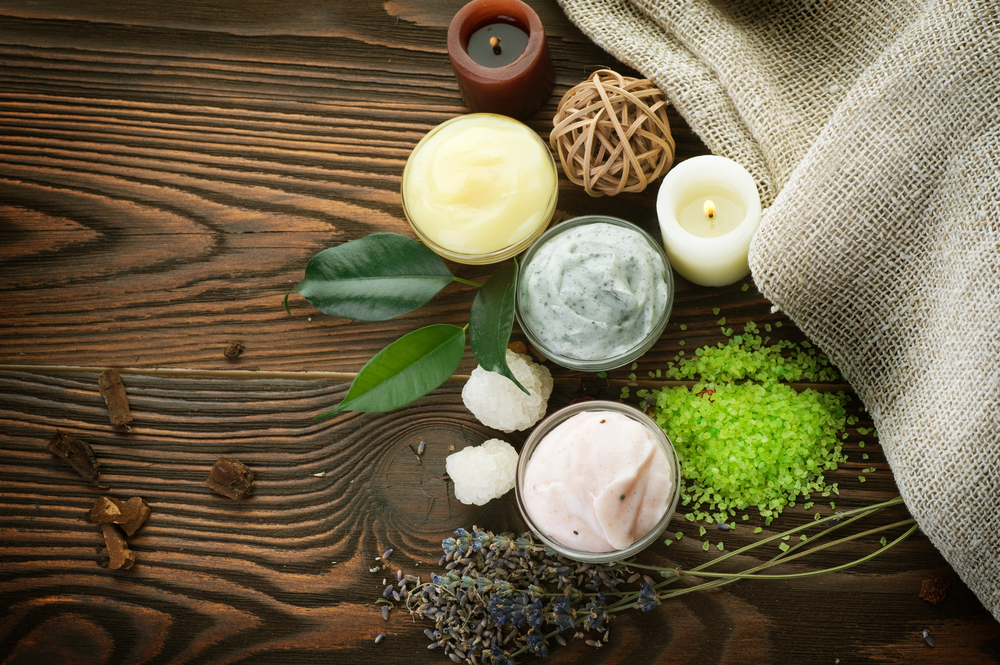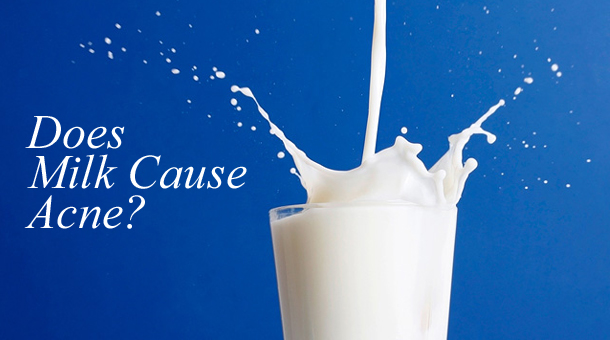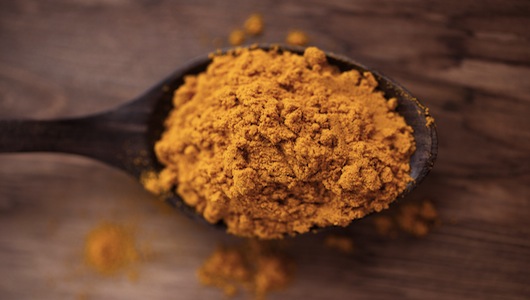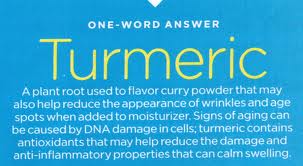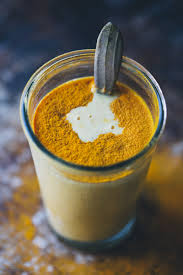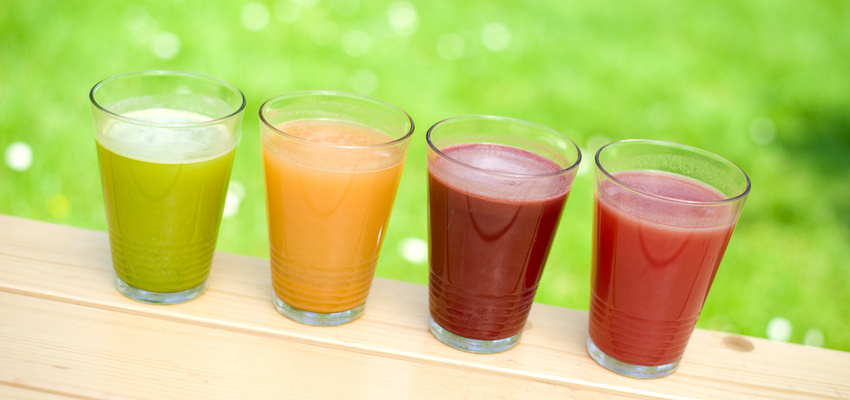The 10 Most Unwanted Ingredients In Everyday Beauty Products
Are you aware that most of the shampoos and personal care products used today have cancer-causing agents? Here is an overview of the Top 10 Unwanted Ingredients commonly found in shampoos and skin care products and their possible side effects.
1. Isopropyl Alcohol This is a solvent and denaturant (poisonous substance that changes another substance's natural qualities). Isopropyl alcohol is found in hair color rinses, body rubs, hand lotions, after-shave lotions, fragrances and many other cosmetics. This petroleum-derived substance is also used in antifreeze and as a solvent in shellac. According to A Consumer's Dictionary of Cosmetic Ingredients, inhalation or ingestion of the vapor may cause headaches, flushing, dizziness, mental depression, nausea, vomiting, narcosis and coma.
2. Mineral Oil Baby This is 100% mineral oil. This derived substance is commonly used petroleum ingredient coats the skin just like also used in plastic wrap. The skin's natural immune barrier is disrupted as this plastic coating inhibits its ability to breathe and absorb and as a the Natural Moisture Factor (moisture and nutrition). The solvent in firm skin's ability to release toxins is impeded by this "plastic wrap,"which can promote acne and other disorders. This process slows down skin function and normal cell development causing the skin to prematurely age.
3. PEG This is an abbreviation for polyethylene glycol that is used in making cleansers to dissolve oil and grease as well as thicken products. Because of their effectiveness, Pegs are often used in caustic spray-on oven cleaners and yet are found in many personal care products. Pegs contribute to stripping the Natural Moisture Factor, leaving the immune system vulnerable. They are also potentially carcinogenic.
4. Propylene Glycol (PG) As a "surfactant"or wetting agent and solvent, this ingredient is actually the active component in antifreeze. There is no difference between the PG used in industry and the PG used in personal care products. It is used in industry to break down protein and cellular structure (what the skin is made of) yet is found in most forms of make-up, hair products, lotions, after-shave, deodorants, mouthwashes and toothpaste. It is also used in food processing. Because of its ability to quickly penetrate the skin, the EPA requires workers to wear protective gloves, clothing and goggles when working with this toxic substance. The Material Safety Data Sheets warn against skin contact, as PG has systemic consequences such as brain, liver and kidney abnormalities. Consumers are not protected nor is there a warning label on products such as stick deodorants, where the concentration is greater than that in most industrial applications.
5. Sodium Lauryl Sulfate (SLS) and Sodium Laureth Sulfate (SLES) Used as detergents and surfactants, these closely related compounds are found in car wash soaps, garage floor cleaners and engine degreasers. Yet both SLS and SLES are used more widely as one of the major ingredients in cosmetics, toothpaste, hair conditioner and about 90% of all shampoos and products that foam. Mark Fearer in an article, Dangerous Beauty, says "... in tests, animals that were exposed to SLS experienced -eye damage, along with depression, labored breathing, diarrhea, severe skin irritation and corrosion and death." According to the American College of Toxicology states both SLS and SLES can cause malformation in children's eyes. Other research has indicated SLS may be damaging to the immune system, especially within the skin. Skin layers may separate and inflame due to its protein denaturing properties.
It is possibly the most dangerous of all ingredients in personal care products. Research has shown that SLS when combined with other chemicals can be transformed into nitrosamines, a potent class of carcinogens, which cause the body to absorb nitrates at higher levels than eating nitrate-contaminated food." According to the American College of Toxicity report,"SLS stays in the body for up to five days..." Other studies have indicated that SLS easily penetrates through the skin and enters and maintains residual levels in the heart, the liver, the lungs and the brain. This poses serious questions regarding its potential health threat through its use in shampoos, cleansers and toothpaste."
6. Chlorine According to Doris J. Rapp, M.D., author of Is This Your Child's World? exposure to chlorine in tap water, showers, pool, laundry products, cleaning agents, food processing, sewage systems and many others, can effect health by contributing to asthma, hay fever, anemia, bronchitis, circulatory collapse, confusion, delirium diabetes, dizziness, irritation of the eye, mouth, nose throat, lung, skin and stomach, heart disease, high blood pressure and nausea. It is also a possible cause of cancer. Even though you will not see Chlorine on personal care product labels, it is important for you to be aware of the need to protect your skin when bathing and washing your hair.
7. DEA (diethanolamine) MEA (momoethanolamine) TEA (triethanolamine)
DEA and MEA are usually fisted on the ingredient label in conjunction with the compound being neutralized. Thus look for names like Cocamide DEA or MEA, Lauramide DEA, etc. These are hormone disrupting chemicals and are known to form cancer causing nitrates and nitrosamines. These are commonly found in most personal care products that foam, including bubble baths, body washes, shampoos, soaps and facial cleansers. On the show, CBS This Morning, Roberta Baskin revealed that a recent government report shows DEA and MEA are readily absorbed in the skin. Dr. Samuel Epstein, Professor of Environmental Health at the University of Illinois said, "repeated skin applications of DEA-based detergents resulted in a major increase in the incidence of two cancers - liver and kidney cancers." John Bailey, who oversees the cosmetic division for the FDA said the new study is especially important since "the risk equation changes significantly for children."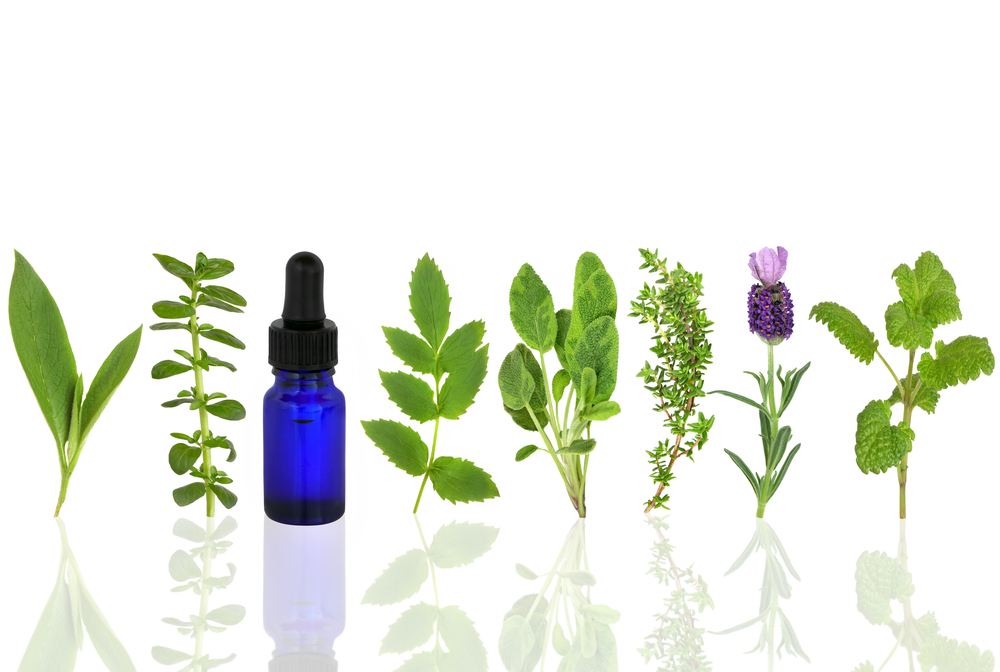
8. FD & C Color Pigments Many color pigments cause skin sensitivity and irritation. Absorption of certain colors can cause depletion of oxygen in the body and even death. Debra Lynn Dadd says M Home Safe Home:"Colors that can be used in foods, drugs, and cosmetics are made from coal tar. There is a great deal of controversy about their use, because animal studies have shown almost all of them to be carcinogenic."
9. Fragrance Fragrance is present in most deodorants, shampoos, sunscreens, skin care body care and baby products. Many of the compounds in fragrance are carcinogenic or otherwise toxic. "Fragrance on a label can indicate the presence of up to 4,000 separate ingredients. Most or all of them are synthetic. Symptoms reported to the FDA have included headaches, dizziness, rashes, skin discoloration, violent coughing and vomiting, and allergic skin irritation. Clinical observation by medical doctors have shown that exposure to fragrances can affect the central nervous system, causing depression hyperactivity, irritability, inability to cope, and other behavioral changes," Home Safe Home.
10. Imidazolidinyl Urea and DMDM Hydantoin These are just two of the many preservatives that release formaldehyde (formaldehyde-donors). According to the Mayo Clinic, formaldehyde can irritate the respiratory system, cause skin reactions and trigger heart palpitations. Exposure to formaldehyde may cause joint pain, allergies, depression, headaches, chest pains, ear infections, chronic fatigue, dizziness and loss of sleep. It can also aggravate coughs and colds and trigger asthma. Serious side effects include weakening of the immune system and cancer. Nearly all brands of skin, body and hair care, antiperspirants and nail polish found in stores contain formaldehyde-releasing ingredients.
 The Kasia Organics “Informed Beauty” Promise:
The Kasia Organics “Informed Beauty” Promise:
We always use: the finest, all-natural ingredients that not only nourish the body but awaken the senses and promote healthy, safe living through informed beauty. The result: radiant, restored skin and hair.
We never use: parabans, petro-chemicals, phthalates, artificial preservatives, lauryl sulfates, artificial colors or dyes, synthetic fragrances, wasteful fillers or animal testing—unhealthy junk your body doesn’t need!
Stop Weight Gain from Thyroid Complications and Get Your Body Back
Guest Post from Womentowomen.com
Most of us still blame our weight gain on lack of willpower, eating too much and not exercising enough. Unfortunately, magazines, the internet and even many well-meaning practitioners continue to perpetuate the blame game. But when your thyroid is imbalanced, you’re likely fighting an uphill battle with your weight that simply isn’t your fault. And you can do something to stop it.
When thyroid hormones are low, it causes physical changes in your body and brain that increase weight gain. Even with minimally low thyroid hormone, the centers of the brain that control appetite are altered and the chemical “messengers” that regulate how and when we eat get mixed up. These messengers include serotonin, beta endorphin, and GABA (gamma-aminobutyric acid), which perhaps not coincidentally, are also tightly connected to moods. If that wasn’t enough, the hormone leptin — which stimulates weight loss, decreases hunger, and increases fullness — can also become inefficient when thyroid hormone is low.
These changes often lead to sharp carbohydrate cravings, weight gain, distressing changes in body shape, as well as low energy, and depressed mood. But you have the opportunity to nip this weight gain in the bud. And the sooner you do, the less likely you’ll be continuing on the path toward worsening thyroid imbalance and even more weight gain.
4 “ingredients” to stop thyroid weight gain:
1. Herbs. Several helpful herbs are known to boost thyroid function and halt thyroid-related weight gain.
Bacopa monnieri is an ayurvedic herb that can increase T4 hormones. (T4 and T3 are the thyroid hormones made and used by your body.)
Hops (yes, the same plant they use in beer!) benefit your thyroid by allowing thyroid hormones to enter cells more accessibly.
Sage contains phytochemicals (plant chemicals) that promote better hormone reception in cells as well as boost mood, memory and healthy blood sugar balance. Irregular blood sugar is often a major player in weight gain.
Ashwagandha is another ayurvedic herb that supports thyroid hormone production while also working to balance the endocrine system.
Coleus forskohlii contains an important plant chemical known as forskolin, which mimics thyroid-stimulating hormone and supports healthy body weight and mood.
All of these herbs together in a combination support the healthy signaling between your thyroid and the rest of your body. This signaling is essential to staying at your best weight. If you’re already taking thyroid medication, we always suggest discussing new supplements with your practitioner.
2. Nutrients. Many vitamins and minerals play roles in thyroid health, but by far the two most important are iodine and selenium. Iodine is the most basic building block your body needs to make the key thyroid hormones T3 and T4. Iodine can be found in sea vegetables, seafood and iodized sea salt. Selenium helps to convert T4 into T3, which is the most useful hormone form. Selenium can also regulate thyroid hormone synthesis and metabolism. Brazil nuts, mushrooms, beef and sunflower seeds are all healthy sources of selenium. To cover these and other bases, we recommend taking a daily high-quality multivitamin/mineral complex for Thyroid Support.
3. Food choices. Obviously, seafood, sea vegetables sunflower seeds, and Brazil nuts are part of a thyroid-healthy diet. But there are other important food choices you can make to support your thyroid and healthy weight.
Eliminate gluten. The first and most important recommendation is to cut back on or completely eliminate gluten from your diet. We understand this is difficult, but it can make an enormous difference in how you look and feel. Research shows that gluten has been connected to a very common form of hypothyroidism known as Hashimoto’s hypothyroidism or autoimmune hypothyroidism. Many foods that contain gluten (pasta, bread, cakes, pastries, etc.) are also generally high in carbohydrates that can disrupt blood sugar balance and shift your body toward weight gain.
Limit soy. Soy is another food that may disrupt thyroid function. However, if you have enough iodine in your body, the effects of soy are generally minimal. If you are taking a good multivitamin or supplement that includes iodine, cooked soy is not harmful to your thyroid.
Add protein, fiber and fat. We also recommend eating protein, fiber, and/or healthy fats with every meal. These foods minimize blood sugar highs and lows and help keep insulin levels steadier. This will not only help with your thyroid function, but also limit extra weight gain.
Eat fresh, whole foods cooked in non-plastic cookware. When you eat and drink, try to limit your exposure to bisphenol-A, found in plastic water bottles, the lining of aluminum cans and some non-stick cookware. According to the National Academy of Hypothyroidism, BPA can significantly block thyroid activity.
4. Exercise. It may be hard to get up and exercise when your thyroid function is sluggish, but research is showing that increasing your heart rate through exercise can increase your thyroid hormones. You can start by simply taking a walk around the block, renting a gentle yoga DVD from the library, or taking a swim at your local pool.
Kasia Organic Salon provides hair and skin care products and services that do not include any form of chemicals that may cause havoc on the average women's hormonal cascade/health. We exclusively sell Premier Research Labs supplemental products that help thyroid and weight loss support to every women. Contact us today!
IT’S CONFIRMED. DAIRY PRODUCTS AND SUGAR CAUSE ACNE.
DO DAIRY PRODUCTS AND SUGAR CAUSE ACNE?
The following article is a guest post form Mark Hyman. I have followed Dr. Hyman since the start of my Functional Medicine pursuits back in 2007. He sharp, clear, and helps the reader understand at a ground level of how nutrition, hormones, and every day choices inhibit our "beautiful health."
When I was in my 20's, I had cystic acne, and after removing dairy for 2 months, my acnes was almost completely gone. Food allergies, milk, wheat, etc may be the missing link for many - whether in teenage years, or the return of the pimple in the later stages of life. Enjoy the article.
As our sugar and dairy consumption has increased over the last 100 years so has the number of people with acne. We now have over 17 million acne sufferers, costing our health care system $1 billion a year. Eighty to ninety percent of teenagers suffer acne to varying degrees.
The pimply millions rely on infomercial products hawked by celebrities or over-the-counter lotions, cleansers, and topical remedies. Recent research suggests that it’s not what we slather on our skin that matters most but what we put in our mouth.
Many have suggested a diet-acne link, but until recently it has not been proven in large clinical studies. Instead dermatologists prescribe long-term antibiotics and Accutane, both of which may cause long-term harmful effects. In 2009, a systematic review of 21 observational studies and six clinical trials found clear links.
Two large controlled trials found that cow’s milk increased both the number of people who got acne and its severity. Other large randomized prospective controlled trials (the gold standard of medical research) found that people who had higher sugar intake and a high glycemic load diet (more bread, rice, cereal, pasta, sugar, and flour products of all kinds) had significantly more acne. The good news is that chocolate (dark chocolate that is) didn’t seem to cause acne.
The dietary pimple producing culprits – diary and sugar (in all its blood sugar raising forms) – both cause spikes in certain pimple producing hormones. Dairy boosts male sex hormones (various forms of testosterone or androgens), increases insulin levels, just as foods that quickly raise blood sugar, (sugar and starchy carbs) and spikes insulin.
Androgens and insulin both stimulate your skin to make those nasty, embarrassing pimples. One patient recently told me he would give a million dollars for a pill to cure acne. He doesn’t need to. It seems that for many the cure to acne is at the end of their fork, not in a prescription pad.
While pimples are not as simple as too much milk or sugar in your diet, both have a significant impact. Nutritional deficiencies as well as excesses can worsen acne. Correcting common deficiencies including low levels of healthy omega-3 anti-inflammatory fats, low levels of antioxidants such as vitamin E, zinc, and vitamin A, and including an important anti-inflammatory omega-6 fat called evening primrose oil may all be helpful in preventing and treating unwanted pimples.
I will explain how you can correct and incorporate all of these nutritional elements of your diet and outlines some supplements that will help you fight acne in a moment. But first it is worth taking a deeper look at milk and sugar.
It appears that anabolic or sex hormones in milk contribute to acne …
Stay Away from Dairy and Avoid Acne
One scientist referred to milk as a “complex aqueous, suspended fat, liposomal, suspended protein emulsion”. What we do know is that milk is designed to grow things – namely, babies – and in the case of cow’s milk, calves. It is naturally full of what we call anabolic hormones (the same ones that body builders and A Rod use to grow big muscles, and which cause bad acne).
These are mostly androgens (like testosterone) and growth hormones including insulin like growth factor 1 (IGF-1). There is no such thing as hormone-free milk.
Here’s a short list of the 60-some hormones in your average glass of milk – even the organic, raw, and bovine growth hormone free milk:
- 20α-dihydropregnenolone
- progesterone (from pregnenolone)
- 5α-pregnanedione
- 5α-pregnan-3β-ol-20-one, 20α- and 20β-dihydroprogesterone (from progesterone)
- 5α-androstene-3β17β-diol
- 5α-androstanedione
- 5α-androstan-3β-ol-17-one
- androstenedione
- testosterone
- dehydroepiandrosterone sulphate acyl ester
- insulin like growth factors 1 and 2 (IGF-1 and IGF-2)
- insulin
This is what our government suggests we drink in high doses—at least 3 glasses a day for me, a healthy adult male, according to the mypyramid.gov website. Those guidelines have been strongly criticized by many including leading nutrition scientists from Harvard such as Walter Willett and David Ludwig.
The famous Nurse’s Health Study examining health habits of 47,000 nurses found that those who drank more milk as teenagers had much higher rates of severe acne than those who had little or no milk as teenagers. If you think it is the fat in milk, think again.
It was actually the skim milk that had the strongest risk for acne. In other studies of over 10,000 boys and girls from 9 to 15 years old, there was a direct link between the amount of milk consumed and the severity of acne.
It appears that it is not just the anabolic or sex hormones in milk that causes problem but milk’s ability to stimulate insulin production. It actually may be the lactose or milk sugar in milk that acts more like a soft drink than an egg. Drinking a glass of milk can spike insulin levels 300 percent.
Not only does that cause pimples, but it also may contribute to prediabetes. This is true despite studies funded by the dairy council showing that milk helps with weight loss. The question is compared to WHAT diet – a diet of bagels and Coke, or a healthy phytonutrient, antioxidant-rich, plant-based diet with lean animal protein?
Stay Away from Sugar, Refined Carbs, and Pimples
If a glass of milk causes pimples, that may drive you back to your Pepsi. But not so fast. Recent studies also show that sugar and refined carbs (a high-glycemic diet) cause acne. More importantly, taking kids off sugar and putting them on a healthy, whole foods, low-glycemic load diet resulted in significant improvements in acne compared to a control group eating a regular, high-sugar American diet.
In addition to less pimples, the participants lost weight, became more sensitive to the effects of insulin (resulting in less pimple-producing insulin circulating around the blood). They also had less of the sex hormones floating around their blood that drive pimples. We know that women who have too much sugar and insulin resistance get acne, hair growth on their face, hair loss on the head, and infertility. This is caused by high levels of circulating male hormones and is called polycystic ovarian syndrome but is a nutritional, not gynecologic disease.
But the dietary influences don’t stop there. It is not just sugar, but the bad fats we eat that may also contribute to acne.
Get an Oil Change
Our typical Western diet is full of inflammatory fats – saturated fats, trans fats, too many omega-6, inflammatory, processed vegetable oils like soy and corn oils. These increase IGF-1 and stimulate pimple follicles. Inflammation has been linked to acne, and anti-inflammatoryomega-3 fats (from fish oil) may help improve acne and help with many skin disorders.
Balance the Hormones that Cause Skin Problems
The link is clear - hormonal imbalances caused by our diet trigger acne. Our diet influences sex hormones like testosterone, IGF-1, and insulin, which promote acne. The biggest factors affecting your hormones is the glycemic load of your diet (which is determined by how quickly the food you eat increases your blood sugar and insulin levels), and the amount of dairy products you eat. The good news is that eating a healthy diet and taking a few supplements can balance those hormones. Exercise also helps improve insulin function.
How to Prevent and Treat Acne
Eight simple steps to help most overcome their acne problems:
- Stay away from milk. It is nature’s perfect food – but only if you are a calf.
- Eat a low glycemic load, low sugar diet. Sugar, liquid calories, and flour products all drive up insulin and cause pimples.
- Eat more fruits and vegetables. People who eat more veggies (containing more antioxidants and anti-inflammatory compounds) have less acne. Make sure you get your 5–9 servings of colorful fruits and vegetables every day.
- Get more healthy anti-inflammatory fats. Make sure to get omega-3 fats (fish oil) and anti-inflammatory omega-6 fats (evening primrose oil). You will need supplements to get adequate amounts (more on that in a moment).
- Include foods that correct acne problems. Certain foods have been linked to improvements in many of the underlying causes of acne and can help correct it. These include fish oil, turmeric, ginger, green tea, nuts, dark purple and red foods such as berries, green foods like dark green leafy vegetables, and omega 3-eggs.
- Take acne-fighting supplements.Some supplements are critical for skin health. Antioxidant levels have been shown to be low in acne sufferers. And healthy fats can make a big difference. Here are the supplements I recommend:
- Evening primrose oil: Take 1,000 to 1,500mg twice a day.
- Zinc citrate: Take 30 mg a day.
- Vitamin A: Take 25,000 IU a day. Only do this for three months. Do not do this if you are pregnant.
- Vitamin E (mixed tocopherols, not alpha tocopherol): Take 400 IU a day.
- Try probiotics. Probiotics also help reduce inflammation in the gut that may be linked to acne. Taking probiotics (lactobacillus, etc.) can improve acne.
- Avoid foods you are sensitive to. Delayed food allergies are among the most common causes of acne—foods like gluten, dairy, yeast, and eggs are common culprits and can be a problem if you have a leaky gut.
Following these simple tips will help you eliminate acne and have that glowing skin you have always dreamed of. And it’s much cheaper (and safer) than expensive medications and dermatologist visits. Improve your diet and take acne-fighting supplements and you will watch your pimples disappear.
For more information on how to optimize your nutrition and improve your skin, seewww.drhyman.com.
Now I’d like to hear from you.
Have you struggled with an acne or skin problem? Have you noticed any link between your skin? What seems to be a problem for you?
Why do you think we are encouraged to consume so much dairy when the risks to our health (and our skin) are so high?
What other steps have you taken to fight acne? What has worked? What hasn’t?
Please leave your thoughts by adding a comment below – but remember, we can’t offer personal medical advice online, so be sure to limit your comments to those about taking back our health!
To your good health,
Mark Hyman, MD
References
- F. William Danby, MD, Nutrition and acne, Clinics in Dermatology (2010) 28, 598–604
- White GM. Recent findings in the epidemiologic evidence, classification, and subtypes of acne vulgaris. J Am Acad Dermatol 39(2 Pt 3):S34-7 (1998 Aug).
- Lello J, Pearl A, Arroll B, et al. Prevalence of acne vulgaris in Auckland senior high school students. N Z Med J 108(1004):287-9 (1995 Jul 28).
- Venereol 21(6):806-10 (2007 Jul).
- Wolf R, Matz H, Orion E. Acne and diet. Clin Dermatol 22(5):387-93 (2004 Sep-Oct).
- Magin P, Pond D, Smith W, et al. A systematic review of the evidence for myths and misconceptions’ in acne management: diet, face-washing and sunlight. Fam Pract 22(1):62-70 (2005 Feb).
- Spencer EH, Ferdowsian HR, Barnard ND. Diet and acne: a review of the evidence. Int J Dermatol 48(4):339-47 (2009 Apr).
- Bendiner E. Disastrous trade-off: Eskimo health for white civilization, Hosp Pract 9:156-89 (1974).
- Adebamowo CA, Spiegelman D, Danby FW, et al. High school dietary dairy intake and teenage acne. J Am Acad Dermatol 52(2):207-14 (2005 Feb).
- Adebamowo CA, Spiegelman D, Berkey CS, et al. Milk consumption and acne in adolescent girls. Dermatol Online J 12(4):1 (2006).
- Adebamowo CA, Spiegelman D, Berkey CS, et al. Milk consumption and acne in teenaged boys. J Am Acad Dermatol 58(5):787-93 (2008 May).
- Hoyt G, Hickey MS, Cordain L. Dissociation of the glycaemic and insulinaemic responses to whole and skimmed milk. Br J Nutr 93(2):175-7 (2005 Feb).
- Kaymak Y, Adisen E, Ilter N, et al. Dietary glycemic index and glucose, insulin, insulin-like growth factor-I, insulin-like growth factor binding protein 3, and leptin levels in patients with acne. J Am Acad atol 57(5):819-23 (2007 Nov). Cordain L, Lindeberg S, Hurtado M, et al. Acne vulgaris: a disease of Western civilization. Arch Dermatol 138(12):1584-90 (2002 Dec).
- Smith RN, Mann NJ, Braue A, et al. A low-glycemic-load diet improves symptoms in acne vulgaris patients: a randomized controlled trial. Am J Clin Nutr 86(1):107-15 (2007 Jul).
- Smith RN, Mann NJ, Braue A, et al. The effect of a high- protein, low glycemic-load diet versus a conventional, high glycemic-load diet on biochemical parameters associated with acne vulgaris: a randomized, investigator-masked, controlled trial. J Am Acad Dermatol 57(2):247-56 (2007 Aug).
- Smith RN, Braue A, Varigos GA, et al. The effect of a low glycemic load diet on acne vulgaris and the fatty acid composition of skin surface triglycerides. J Dermatol Sci 50(1):41-52 (2008 Apr).
- Zouboulis CC. Is acne vulgaris a genuine inflammatory disease? Dermatology 203(4):277-9 (2001).
- James MJ, Gibson RA, Cleland LG. Dietary polyunsaturated fatty acids and inflammatory mediator production. Am J Clin Nutr 71(1 Suppl):343S-8S (2000 Jan).
- Simopoulos AP. Essential fatty acids in health and chronic disease. Am J Clin Nutr 70(3 Suppl):560S-9S (1999 Sep). 26. Kaaks R, Bellati C, Venturelli E, et al. Effects of dietary intervention on IGF-I and IGF-binding proteins, and related alterations in sex steroid metabolism: the Diet and Androgens (DIANA) Randomised Trial. Eur J Clin Nutr 57(9):1079-88 (2003 Sep).
- Fulton JE, Jr., Plewig G, Kligman AM. Effect of chocolate on acne vulgaris. Jama 210(11):2071-4 (1969 Dec 15).
- Anderson PC. Foods as the cause of acne. Am Fam Physician 3(3):102-3 (1971 Mar).
Bronzed Beauties: How to Get Glowing the Natural—and Safe!—Way
 It’s officially summer —and finally warm here! The sun is out, the sky is blue and we’re wearing our favorite summer uniform of a breezy lace tank and comfy cutoffs. Other summer staples we make sure to always have on hand: sunscreen and self-tanner. Because even though that sun-kissed look makes us feel healthy and radiant, overexposure to the sun’s warm rays means damaging free radicals (read: lines and wrinkles!) and the increased chance of skin cancer.
It’s officially summer —and finally warm here! The sun is out, the sky is blue and we’re wearing our favorite summer uniform of a breezy lace tank and comfy cutoffs. Other summer staples we make sure to always have on hand: sunscreen and self-tanner. Because even though that sun-kissed look makes us feel healthy and radiant, overexposure to the sun’s warm rays means damaging free radicals (read: lines and wrinkles!) and the increased chance of skin cancer.
Ready for a bronzed glow that’s as safe and natural as they come? Pick up Kasia Organic’s Honey-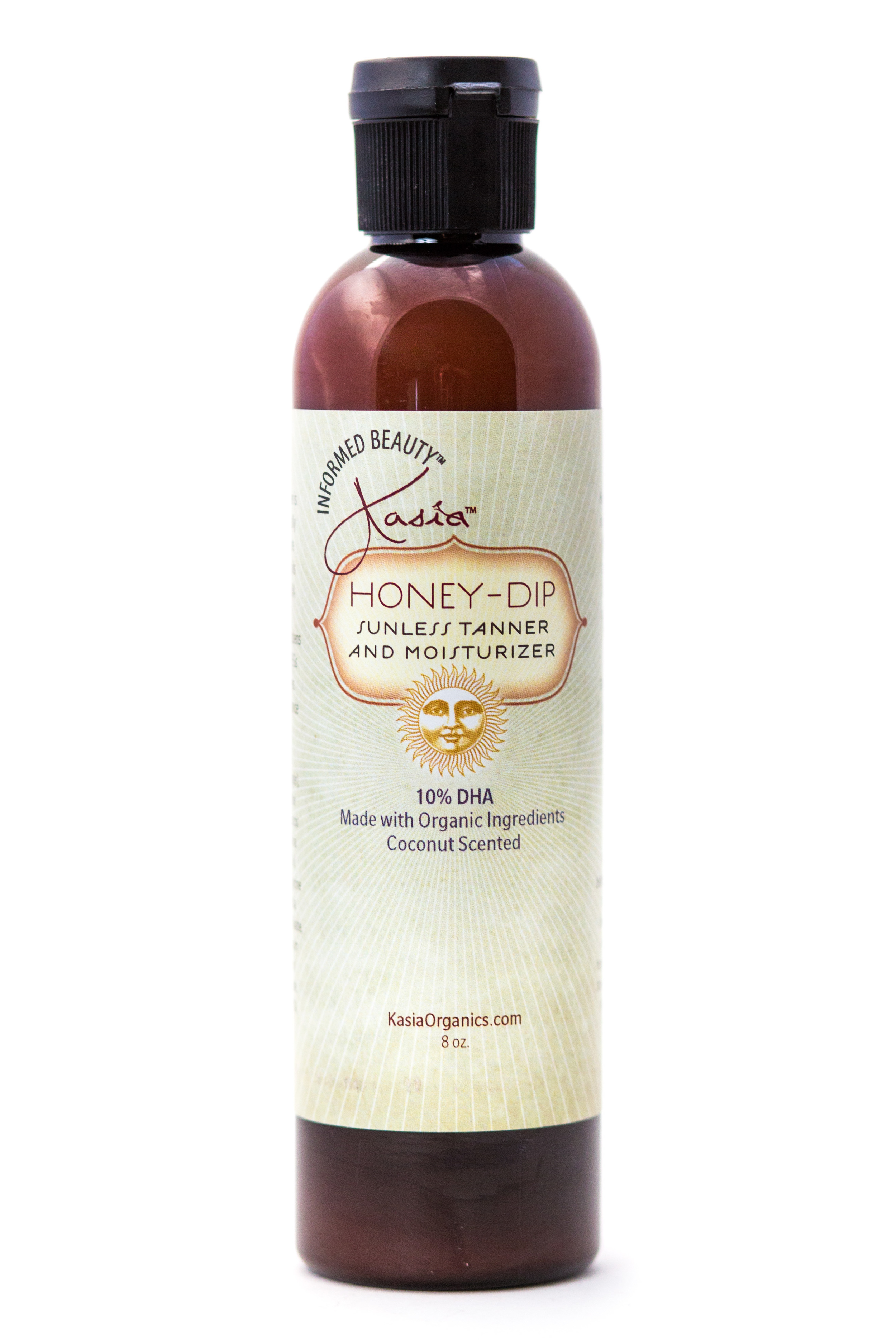 Dip Natural Sunless Tanner and Anti-Aging Cream. Reformulated with nourishing, anti-aging ingredients and an ultra-lightweight feel, it effortlessly gives skin a healthy glow. With 10% naturally-derived DHA, Honey-Dip offers a flawless, buildable tan, and perhaps most importantly, it smells divine and won’t ever look orange or have a typical self-tanner aroma. Perfect for getting that day-at-the-beach tan without damaging your skin!
Dip Natural Sunless Tanner and Anti-Aging Cream. Reformulated with nourishing, anti-aging ingredients and an ultra-lightweight feel, it effortlessly gives skin a healthy glow. With 10% naturally-derived DHA, Honey-Dip offers a flawless, buildable tan, and perhaps most importantly, it smells divine and won’t ever look orange or have a typical self-tanner aroma. Perfect for getting that day-at-the-beach tan without damaging your skin!
Also currently slathered all over our face and body is Kasia’s Good Day Sunshine Sunshield. The SPF 35 product packs a vitamin- and antioxidant-rich, anti-aging punch that hydrates skin while protecting it from the sun’s harmful rays. It smells light and fresh, goes on smooth and comes in a mineral non-nano formula that means it’s safe for the entire family.
What’s all the hype about nano particles? Kasia founder Kassandra Kuehl explains:
“Sunscreens have been closely watched both by the consumer and the regulating organizations for the past few years, and rightfully so. With a brother who passed away from skin cancer at the young age of 24, I have been personally invested in formulating a sunscreen that is safe for all ages.  Within the past two years, broad spectrum sunscreens have exposed a new danger: Sunscreen manufacturers are now adding nano particles to sunscreens with titanium and zinc oxide to make application more smooth and clear (versus the traditional white effect). Unfortunately, nano particles are being added without appropriate labeling or reliable safety information, as they pose potential long-term risk to health.”
Within the past two years, broad spectrum sunscreens have exposed a new danger: Sunscreen manufacturers are now adding nano particles to sunscreens with titanium and zinc oxide to make application more smooth and clear (versus the traditional white effect). Unfortunately, nano particles are being added without appropriate labeling or reliable safety information, as they pose potential long-term risk to health.”
At Kasia, we put your "beautiful health" first and foremost. We are committed to using non-nano ingredients and have formulated a blend of broad-spectrum UVA/UVB protection with food-grade certified organic ingredients and antioxidant-rich oils to hydrate, protect, combat free radicals and promote youthful, flawless skin.
Contact our team at 612.824.7611 or Kassie@kasiaorganicsalon.com
Turmeric's Amazing Benefits for Beautiful Health + Bonus Smoothie Recipe!
Are You Ready to Add More Spice to Your Life --
Add this anti-inflammatory and antioxidant-rich staple from the spice rack!
Beautiful Health through Turmeric:
- Supports healthy joint function
- Promote radiant skin
- Improve digestion
- Supporting your memory function
- Promoting your heart health
- Boosting your immune system
Curcumin can potentially benefit you by:
- Helping maintain your healthy digestive system
- Supporting your healthy bones, joints, and overall skeletal system
- Helping you maintain cholesterol levels that are already within the normal range
- Promoting your healthy blood and liver functions
How Turmeric Provides Antioxidant Nutrient
You probably know that antioxidants are important nutrients in supporting your health by slowing down free radical damage that can seriously damage your cells, organs and DNA. Turmeric helps protect your cells -- and counteracts free radical damage (aging).
The antioxidant content within turmeric comes from active compounds called curcuminoids. These curcuminoids deliver antioxidants that are:
- 5 to 8 times stronger than vitamin E -- and also stronger than vitamin C
- 3 times more powerful than grape seed or pine bark extract
- Strong enough to scavenge the hydroxyl radical -- considered by many to be the most reactive of all oxidants.
Oxidation by free radicals can damage cells and DNA -- and thus impact your overall wellness and speeds up the aging process.
Why this Herb Can Help Enhance Your Outer Beauty
Speaking of antioxidant nutrients and their potential to impact the aging process, some of the first aging signs you may see as you get older are changes to your hair and skin. GOOD NEWS! By including Tumeric in your daily foods, you can contribute to the process of radiant beauty! Turmeric helps you:
- Cleanse your skin and maintain its elasticity
- Provide nourishment to your skin
- Balance the effects of skin flora
Your Cellular Booster and Adaptogen
Another potential advantage from turmeric usage involves the smallest living things within you -- your cells. Turmeric can assist your cells in three ways, by:
- Maintaining your cells' integrity when threatened by occasional environmental stressors
- Helping you neutralize substances that can cause cellular stress
- Providing the antioxidants you need to help support your cells against excessive oxidation and free radicals
- Helps women's general fertility
Summer Tropic Turmeric Smoothie Recipe:
- 8 oz unsweetened almond milk
- ½ tsp turmeric
- ½” piece fresh ginger
- 1 cup frozen pineapple
- ½ frozen banana
- 1 tsp coconut oil
- 1 tsp chia seeds
Blend ingredients until smooth and enjoy your organic Tropical Turmeric Smoothie.
Kasia Recommends: Premier Research Labs Turmeric
Premier Turmeric is imported from India, freshly ground, and then encapsulated immediately to retain its unparalleled, active volatile essential oils.
Key Benefits:
- DNA repair and liver cleanser*
- The antioxidant potential of curcuminoids in turmeric are 300 times more potent than vitamin E
- Contains remarkable, immune modulating properties*
- Assists the detox mechanisms of the body, especially the liver*

- Helps alleviate stiff and painful joints*
- Helps improve and balances metabolism in the body*
- Promotes healthy digestion, peristalsis and relieves gas*
- Helps purify the subtle nerve channels of the body (known as the acupuncture meridian system)*
- Non-irradiated grade 10 quality from India
Daily Protection
Because of the proven liver cleansing and rejuvenative properties of turmeric, supplementing daily with grade 10 Indian turmeric may provide significant support the body’s primary detox organ, the liver, as well as protection against environmental and dietary toxins.
Stop in Kasia Organic Salon to pick up some power packed Tumeric. Contact Kassandra at Kassie@KasiaOrganicSalon.com.
Informed Summer Beaute' | Toxic Ingredients to Avoid in Your Sunscreen
Toxic Ingredients to Avoid in Your Sunscreen

Organic or not, avoid these ingredients when shopping for safe sunscreens.
- Nano-Particles - penetration enhancers, creates free radical damage when exposed to sunlight, increases the risk of certain Cancers.
- Retinyl Palmitate – a form of Vitamin A can speed the development of lesions and tumors when applied to the skin in the presence of sunlight.
- Avabenzone, Oxybenzone – hormone disruptors, photoallergic reactions, immunotoxicity, probable carcinogen, endocrine disrupter, enhanced skin absorption, bioaccumulates to dangerous levels, biochemical cellular changes, developmental and reproductive toxicity.
- Phenol - reproductive and developmental toxin and pollutes wildlife.
- Octinoxate (Octyl Methoxycinamate)- listed as made from cinnamon, endocrine disruptor, hormone disruptor, penetration enhancer.
- Octocrylene - penetration enhancer, creates free radical damage when exposed to sunlight.
- PABA (Octyl Dimethyl PABA, PABA Ester) – cell mutation, Nitrosamine contamination (carcinogenic), creates free radicals damage when exposed to sunlight, penetration enhancer, hormone disruptor.
- Chemicals That Kill Coral Reefs – paraben, cinnamate, benzophenone, and a camphor derivative.
- Synthetic Fragrance – contains phthalates, developmental and reproductive toxin, respiratory toxicant, probable neurotoxin, possible carcinogen and endocrine disruptor, bio-accumulative in wildlife, immune system toxicant, can contain between 10 and 300 different chemicals, many of which have never been tested for safety.
- Parabens - alter hormone levels, increase risk for certain types of cancer (especially breast), impaired fertility, alteration of the development of a fetus or young child, studies have found parabens in breast tumors, probable skin toxicant, animal studies show brain and nervous system effects.
- Petro-Chemicals - contaminated with impurities, linked to cancer or other significant health problems, bad for the environment.
90% of skin damage is from the SUN! Improve & protect the appearance of your skin… lightly tinted and unscented.
15% OFF Organic Tinted Moisturizer with purchase of Good Day Sunshine
Easy 16 Ways To Detox Every Day
We’re all human. We partake in the occasional (or more frequent) indulgences life has to offer. Even as a practicing health-fanatic-vegetarian-yogi, I can’t imagine my life without my favorite glass(es) of red wine and dessert! Daily detox measures help counteract the less healthy items we put in our body, as well as the environmental factors for which we have little control.
Instead of relying on intense, short-lived detoxes, begin incorporating these steps to detox your body EVERY SINGLE DAY of your life.
1. Drink hot lemon water.
Kick-start the detoxing process first thing in the morning by drinking a cup of warm water with lemon and cayenne.
2. Have a fresh cold-pressed juice
Do it on an empty stomach, which allows your body to absorb the nutrients more quickly. My go-to detox elixir: lemon, kale, spinach, spirulina, and ginger – the more greens, the better!
3. Sip a detox tea.
Sip a few cups of detoxifying tea blends throughout the day. Look for ingredients such as dandelion root, ginger, burdock and licorice root.
4. Add apple cider vinegar.
Along with a host of other benefits, apple cider vinegar alkalizes the body and helps detox the liver. Buy the raw, unfiltered and organic variety.
5. Eat detoxing foods and supplements.
The liver and kidneys serve as the body’s filtration system, and thus are integral to overall health and cleansing. Incorporate the following to aid in continual kidney and liver cleansing: parsley, cilantro, dandelion root, licorice root, cayenne, turmeric, red pepper, garlic, lemon, lime, grapefruit, sea vegetables (seaweed salad, nori, dulse), artichokes, beets, cruciferous vegetables, wheatgrass, spirulina, chlorella and milk thistle.
6. Eat clean.
Incorporate fiber into your diet to keep the elimination process flowing. Limit or avoid high-mercury fish such as swordfish, tuna, mackerel, shark, marlin and grouper. General rule to follow: larger fish typically have higher levels of mercury. Avoid refined sugars, processed foods, alcohol, caffeine and non-organic fruits and veggies.
7. Sweat.
Sweating is crucial for expelling toxins. Use an infrared sauna, which assists in removing heavy metal toxins stored in fat tissues. Take a Bikram yoga class — or any yoga class! Exercise with extra layers to help increase body temperature and perspiration.
8. Invert.
Scientifically shown to help the cardiovascular, lymphatic, endocrine and nervous systems, inversions reverse the flow of gravity, stimulate the lymphatic system, and aid in blood purification. Traditional inversions include:
- Shoulder stand
- Headstand or handstand
- Legs propped up against a wall
9. Jump.
Rebounding is great for stimulating the lymphatic system and increasing circulation. Small, portable trampolines are a quick and easy way to build jumping into your daily routine.
10. Eliminate.
Elimination seemed appropriate for the “Move” category! Further cleanse your colon by taking daily fiber supplements, probiotics, digestive enzymes, and incorporating colon cleanses such as colonics or enemas.
11. Dry body brush.
Before showering, dry brush your body head-to-toe, using long strides toward the heart. This activates the lymphatic system, stimulates blood circulation, and enhances toxin elimination through our body’s largest organ — the skin!
12. Tongue scrape.
Yes, it sounds funny, but this quickly cleans the tongue of accumulated bacteria and toxic debris from the night before. Think of it as giving your body an extra assist in the detox process, while also achieving better breath! I promise you’ll be hooked.
13. Try hydrotherapy.
Hydrotherapy encompasses a large range of approaches and methods. An easy way to incorporate hydrotherapy daily is by alternating between hot and cold water every 30 seconds in the shower. Cold water stimulates, causing blood vessels to constrict, while hot water relaxes and causes blood vessels to dilate. This alternation of hot and cold water improves elimination, decreases inflammation, removes wastes from tissues, and stimulates circulation.
14. Detox bath.
I have a magical detox bath formula resulting from many years of research and testing. And, yes, I’m sharing it with you! Take one every week to cleanse from the outside in.
- Dead sea salts / Epsom salts (2 cups): draw toxins out through the skin
- Baking Soda (2 cups): naturally alkalizing substance helps remove toxins
- Fresh ground ginger (1 tbsp): heats-up body temperature, encouraging perspiration
- Therapeutic-grade essential oils (4 drops each): Geranium, eucalyptus and juniper berry possess powerful agents aiding in detoxification.
15. Get massages.
This deserves two exclamation points. Massages increase circulation, stimulate the lymphatic system and remove toxic build-up. They also feel pretty good.
16. Make your home healthy.
Introduce plants to your home (peace lilies, ferns and palms are great natural air filters), change A/C filters regularly, avoid harsh household chemicals, install chlorine filters, introduce an air purifier, and consider a reverse-osmosis water system.
Michele is a certified yoga instructor (200 RYT), member of Yoga Alliance and teaches Detox and Vinyasa flow classes at Green Monkey in Miami, FL. By day, she works as a Sr. Marketing Strategist Anthropologist at SapientNitro a global interactive marketing, creative design, & technology agency. Michele is finishing her Master of Arts in Liberal Studies with a concentration in psychology and anthropology at the University of Miami. The perpetual hobbyist, she is obsessed with healthy living, detox techniques, philosophy, anthropology, psychology, art and classic literature. On a more personal note, Michele is a spiritual-seeker, humanist, dedicated yogi, practicing vegetarian, and rainy-day appreciator.


